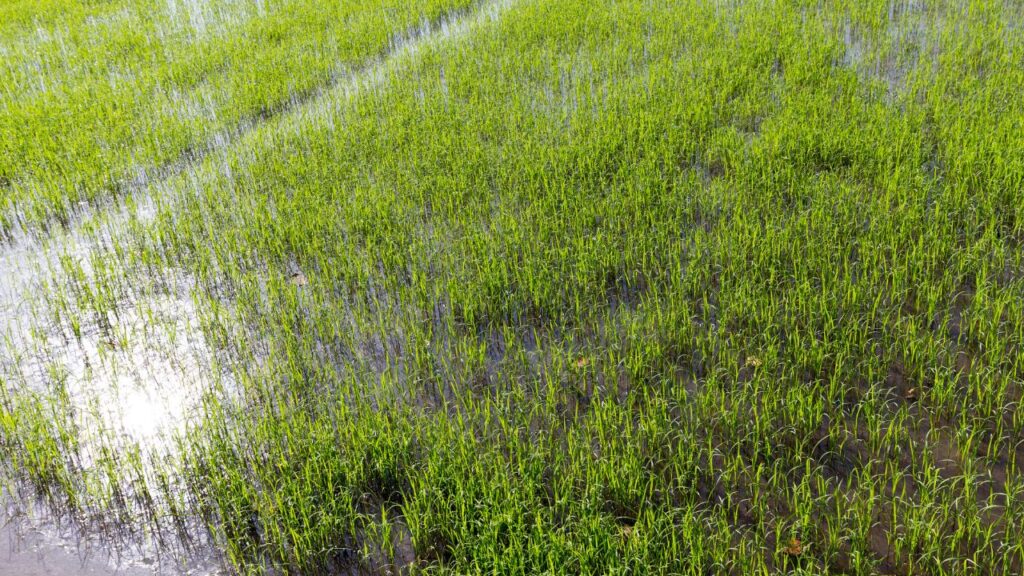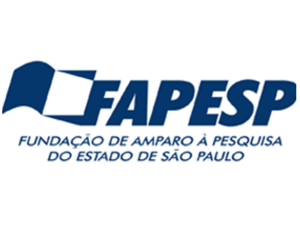Analysis of sustainable management practices to minimize methane emissions in rice fields using the DSSAT model
Rice cultivation is one of the main sources of methane (CH₄) emissions in agriculture. This occurs primarily in flooded areas, where the lack of oxygen in the soil favors microbial processes that release the gas. With the advancement of climate change and global emission reduction targets, alternatives to mitigate the environmental impact of agriculture have become a priority.
In this context, researchers have been seeking strategies to reduce emissions without compromising crop yield. An innovative study conducted by researchers from CCARBON/USP and other partner institutions investigated different water management practices to assess their impact on the sustainability of rice cultivation.
How was the study conducted?
To assess the impact of different water management practices on rice cultivation, the researchers used the DSSAT (Decision Support System for Agrotechnology Transfer) model. This model was calibrated and evaluated with experimental data obtained under subtropical conditions, allowing the simulation of crop performance under different irrigation scenarios.
They analyzed the impact of various irrigation practices on rice paddy, comparing continuous flooding and intermittent irrigation. Simulations were conducted using computational models based on data from four crop seasons in Rio Grande do Sul. To improve the accuracy of predictions, adjustments were made to soil parameters related to methane production. The methodology included daily emissions measurements, plant growth monitoring, and rice productivity analysis.
Water management and environmental impact: what is the best strategy?
The different irrigation scenarios evaluated revealed more efficient strategies for reducing methane emissions without compromising rice yield.
Intermittent irrigation proved to be a viable alternative, reducing methane emissions by up to 80%, depending on soil conditions and drainage frequency. Additionally, this practice maintained grain yield at levels similar to the traditional continuous flooding system.
Long-term simulations, based on 30 years of historical climate data, identified sprinkler irrigation as the most efficient option. When triggered at 50% of the soil’s available water capacity, this strategy showed the lowest cumulative methane emissions and more sustainable production. The high water-methane productivity (CWMP) index, above 50%, reinforces its efficiency by balancing production, water use, and environmental impact.
In contrast, continuous flooding resulted in higher cumulative methane emissions and greater water consumption, making it the least sustainable alternative among those evaluated.
Enhancing DSSAT: Advances in Methane Emission Simulation
To make the simulations more accurate, adjustments were made to the DSSAT model code, allowing for a more realistic representation of methane emissions under non-flooded conditions. The modifications included adjustments to parameters such as soil regeneration rate after drainage and the fraction of water-filled pores that trigger methane production. With these improvements, the model is now able to more faithfully capture the dynamics of methane emissions under different water management scenarios.
Global Relevance: Impacts Beyond Borders
Although conducted in subtropical conditions in southern Brazil, the results of this study provide valuable insights for other regions with similar climate and soil. The adoption of sprinkler irrigation and alternate water management shows great potential for reducing methane emissions. These practices do not compromise productivity, aligning rice production with global sustainability and climate change mitigation goals.
Reference:
Silva, E.H.F.M.; Hoogenboom, G.; Boote, K.J.; Cuadra, S.V.; Porter, C.H.; Scivittaro, W.B.; Steinmetz, S.; Cerri, C.E.P. Implications of water management on methane emissions and grain yield in paddy rice: A case study under subtropical conditions in Brazil using the CSM-CERES-Rice model, Agricultural Water Management, Volume 307, 2025, 109234, ISSN 0378-3774, https://doi.org/10.1016/j.agwat.2024.109234.






